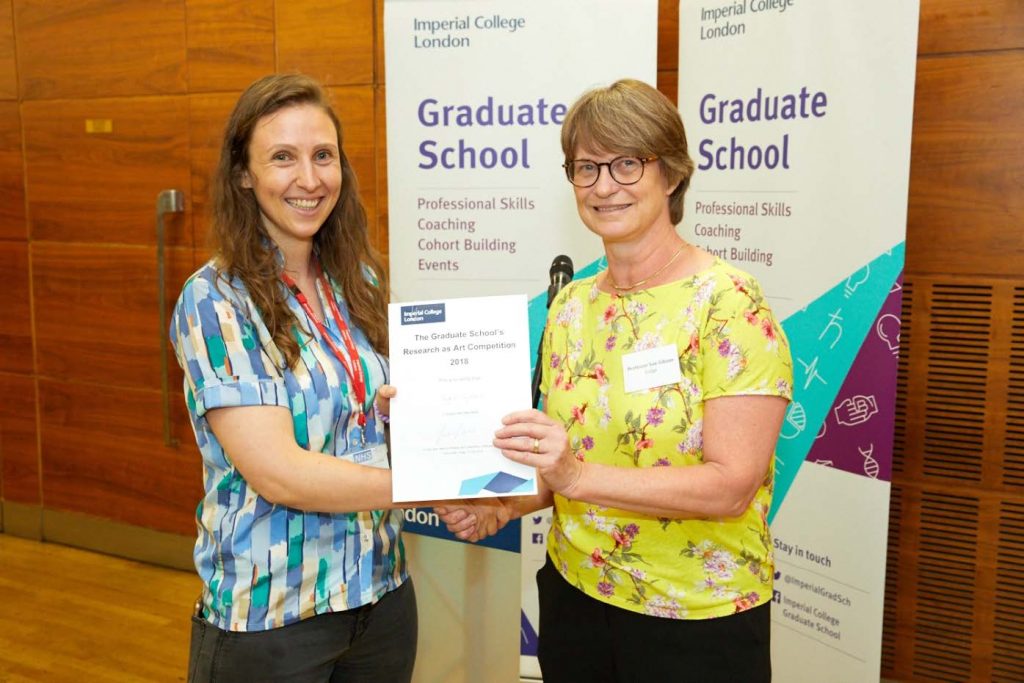By Sophie Spitters, PhD Student, Department of Medicine
The Imperial College London Graduate School organised their annual Summer Showcase on Friday July 13th. The showcase aims to celebrate research undertaken by PhD students at Imperial and invites staff, students and visitors to find out more about their work via a poster and a research as art exhibition. I joined the research as art exhibition, showcasing my NIHR CLAHRC NWL research, and won second prize! First prize was won by Iman Ibrahim, who demonstrated what it takes to get clean drinking water to our taps in her mandala called ‘the ripple effect’. And third prize was won by Laura Braun for her ‘sludge cake’ made from sewage, demonstrating the value of faecal waste treatment in order to return it safely to the environment as a natural fertiliser.

How interventions are spread
My art installation, titled ‘How interventions are spread’, aimed to communicate the reality of spreading healthcare improvement interventions, which often does not follow the expected trajectory. Healthcare improvement is often depicted as a linear straightforward process. First, a problem is identified. Then, a potential solution or intervention gets implemented in one area. Finally, if that intervention has shown to be successful, it is spread to other areas. The aim of spread in this context is to replicate the successful intervention exactly as is. Big investments are made to demonstrate that positive outcomes are linked to a particular intervention. So why change a winning formula? Why change an evidence-based intervention?
My research shows how in reality, the process of spread is a lot more complex. Evidence-based interventions often get presented as nicely packaged products with a clear step-by-step manual, not reflecting the messiness of interpersonal relationships, hard work and contextual dependencies underpinning its development. Hence, interventions do not just get picked up in one place and dropped off in another. When spreading to other areas, interventions change and develop depending on local priorities, capabilities and resources. This work is based on the spread of an allergy service improvement initiative.
I tried to communicate these issues through my art installation via two components: the video below and an interactive element encouraging people to build their own intervention with the (flawed) information and materials provided in the black box.

Exhibiting at the Summer Showcase
Joining the research as art competition was a great opportunity for me to communicate one of my research findings in a creative way. During the creation of the project, I realised that replicating a simple playdoh sculpture (which I used as a visual analogy) had many subtleties in common with replicating interventions in real-life quality improvement efforts. I never actually expected to see that. The Summer Showcase gave me the chance to explore these similarities and differences further with the visitors. It was great talking to people from different disciplines and different backgrounds about my research and to hear about their thoughts and insights. The art installation proved to be a great vehicle to start discussion, explore connections with people’s own experiences, and to visually demonstrate a key take home message from my research.
